
Lot 326
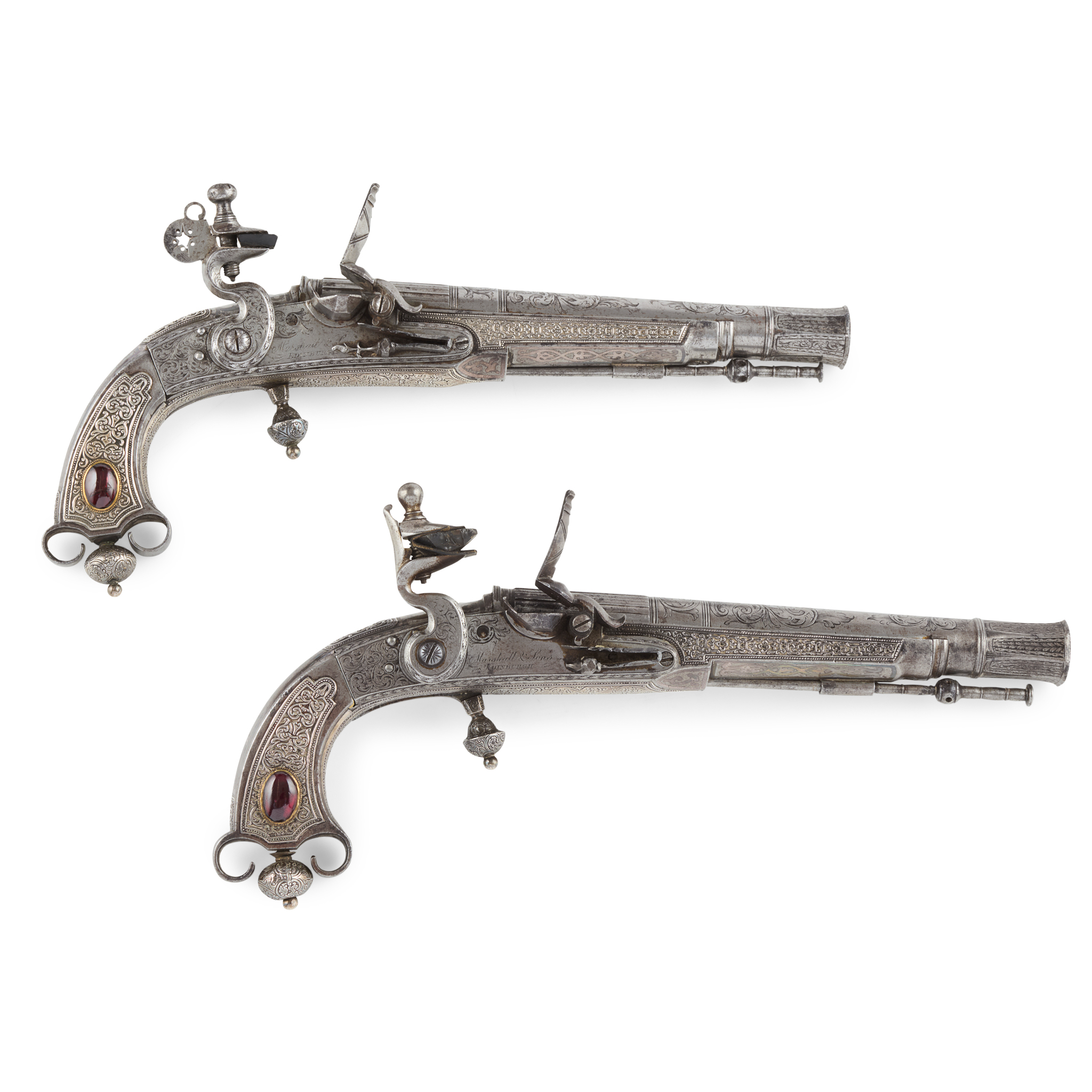
A FINE NEAR PAIR OF MID-19TH CENTURY SCOTTISH ALL METAL HIGHLAND DRESS PISTOLS ‡
BY WILLIAM MARSHALL AND SONS OF EDINBURGH
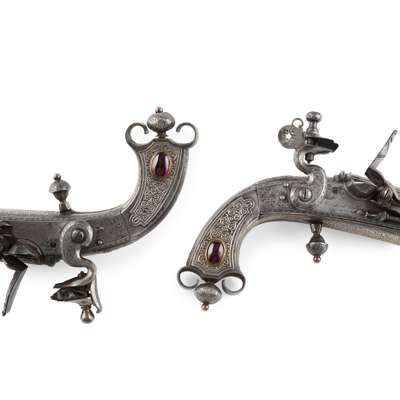
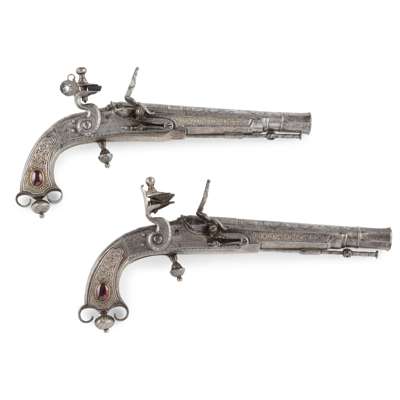
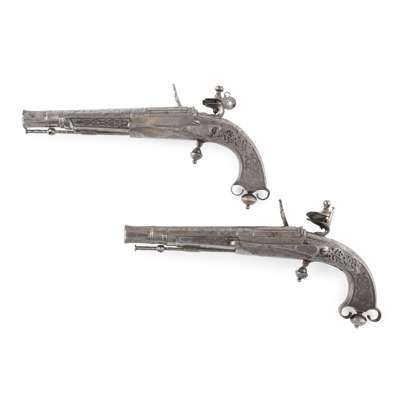
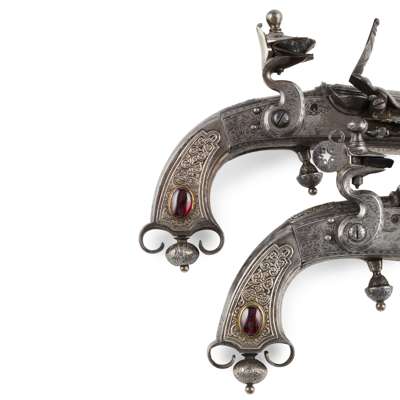
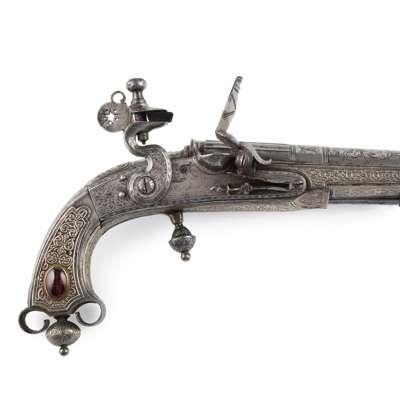


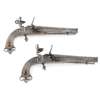
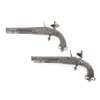
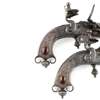
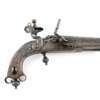
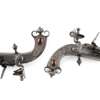
Auction: Day 2: Thursday 21 August - Lots 297 - end
Description
signed to lock, the all metal stocks with profusely engraved decoration throughout, with traditional foliate scrolls and interlace, the grips applied with decoration cast panels set with cabochon garnet, the upper edge of grip with inlaid gold escutcheon in foliate shield frame, the four stage barrels engraved with foliage with reeded breech and divided sections with a flared hexagonal muzzle (2)
Dimensions
17.5cm long (barrel), 26cm long (overall)
Provenance
The John Kirk Collection
Footnote
William Marshall is first recorded within the minutes of the Incorporation of Goldsmiths of the City of Edinburgh as an apprentice to David Downie. His date of indenture is not recorded but must have been around 1791.
William Marshall married Ann Calder and had five children including two sons who would continue the business after his death in 1858 - William Calder (baptised 18th March 1813 – died 1894) and John (baptised 17th September 1816).
Although records are not complete it appears William took both of his sons on as apprentices in 1828. An exact date is not recorded for the change in company name to William Marshall & Sons but it is presumed to be after their apprenticeships would have ended. Certainly by 1851, as the business, exhibiting at London’s Great Exhibition, was titled William Marshall & Sons. At the Great Exhibition they exhibited a remarkably complete and fine Highland Dress Regalia ‘with chased silver mountings studded with carbuncles and cairngorms, iz., goat-sin purse, broad sword, dirk, powder horn, skeen dhu, plaid brooch, sword belt, body belt, show buckles, pistol, Athol bonnet’.
After the success of the 1851 Great Exhibition and their attendance, William Marshall & Sons. took a large display at the Edinburgh International Exhibition of Industry, Science and Art in 1886. A spectacle beyond compare in Scotland at the time, it followed in the footsteps of other exhibitions of craft, design, art and technology.
Opened by Queen Victoria’s Grandson Prince Albert Victor, Duke of Clarence and Avondale, the exhibition ran for almost 6 months. Showcased in purpose built pavilions which were initially expected to be permanent but were demolished when a planning act for the Meadows on which they were situated become apparent. Occupying some 30 acres it welcomed over 2,770,000 visitors.
They were awarded two gold medals for ‘National Jewllery and reproduction of Scotch antique enamel work’ and ‘excellence in workmanship in watches’. They are recorded as winning four medals.
By at least 1891 Marshall’s are recorded holding the Royal Warrant to Queen Victoria as ‘Goldsmiths, Silversmiths and Jewellers’.
William Marshall would work variously in Edinburgh’s Old Town with their last known location at 62 North Bridge. However, by 1861 they had moved to the fashionable New Town and Edinburgh’s premier street, Princes Street. Firstly in 1861 to number 24 and by 1885 to 134 Princes Street. Their final move would be to 87 George Street when by 1891 on the retirement of both William Marshall’s sons the firm would be taken over by their apprentice and become Brook & Sons.
Note: Sold as an exempt item under Section 58 (2) of the 1968 Firearms Act, to be held as a curiosity or ornament











